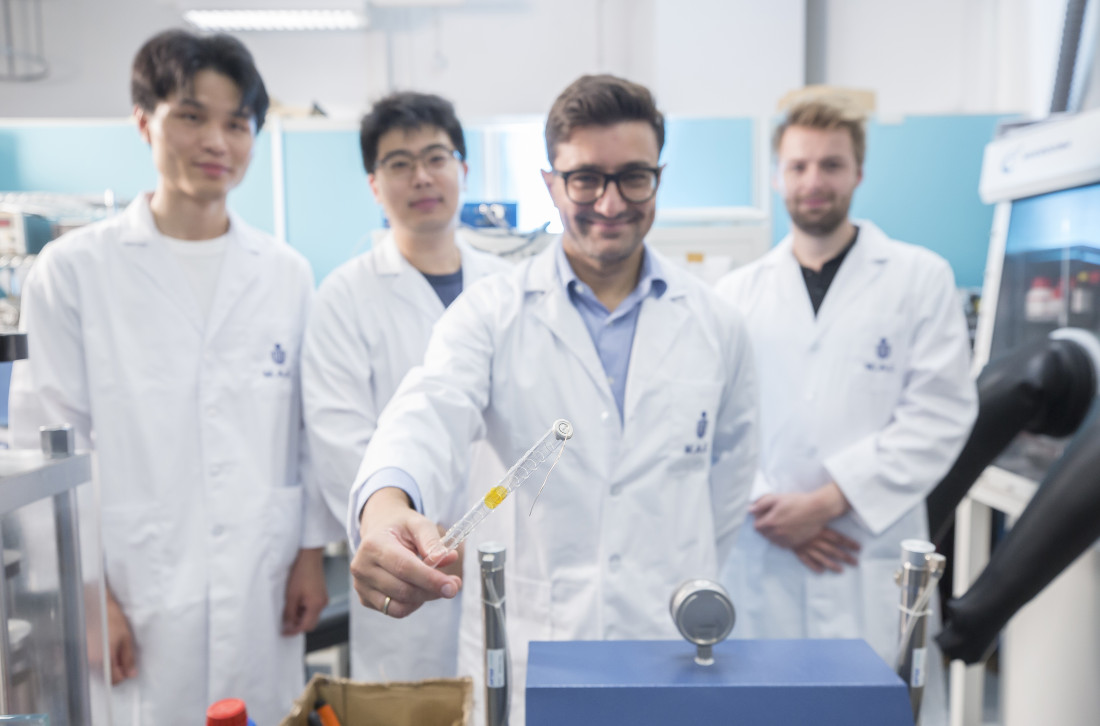Research
The Chair of Electrode Design for Electrochemical Energy Systems focuses on material development, cell expansion, and diagnostics, emphasizing solid-state and quasi-solid-state technologies. Central research areas include the development of innovative materials and devices using first-principle and continuum-level modelling.
Advanced Batteries
For nearly a decade, our team has researched solid and quasi-solid-state batteries, developing new electrolytes using ceramics, ceramic-polymer composites, and polymers. The latter two electrolyte types show the most promise for practical applications. As commercial LIBs struggle with increasing energy density demands and maintaining energy density at sub-zero temperatures, we designed new quasi-solid-state polymer electrolytes that, when paired with high-capacity, high-voltage electrodes, deliver exceptional performance at room temperature and below freezing. We also created novel fabrication methods for ultrathin electrolytes and in situ polymerization of polymer electrolytes. Current research includes developing in situ polymerized materials for rapid charging. Our team has also explored Na-based battery electrodes, particularly conversion-type sulfide materials like Sb2S3 and MoS2, examining Na insertion mechanisms. By combining these electrodes with carbon materials and sodiophilic compounds, we have enhanced their cycling stability. For emerging, low-cost, Zn-metal rechargeable batteries, we optimized deep eutectic electrolytes.

Reversible Protonic Ceramic Cells for Energy Storage and Power-to-X Applications
Globally, government policies aim to reduce carbon emissions from electricity generation. To minimize reliance on fossil fuels, strategies propose integrating renewable energy sources with grid-scale lithium-ion battery storage. However, lithium batteries' lifespan, supply security, and insufficient recycling hinder this approach. Additionally, the energy storage capacity of batteries increases linearly with device size, making the technology costly and space-inefficient. Reversible fuel cells offer a superior grid-scale solution, especially for long-term or seasonal storage. Traditional reversible fuel cells utilize oxygen-conducting electrolytes, requiring high operational temperatures (800–1000 °C), increasing system complexity, reducing durability, and raising costs. Proton-conducting ceramic electrolytes function effectively at 400–600 °C, providing advantages over reversible solid oxide fuel cells, such as simpler support systems, reduced thermal limitations, and lower expenses.
Although reversible proton ceramic cells hold considerable potential, development faces significant challenges, primarily enhancing cell power density and efficiency. Successful protonic ceramic fuel cell implementation necessitates high-performance, cost-effective cathode catalyst discovery. For instance, rational design guided by theoretical insights led to the development of Ba0.875Fe0.875Zr0.125O3-δ material, demonstrating exceptional oxygen reduction performance, and surface stability, and achieving record power densities.
Modeling Impedance Data
Electrochemical spectroscopy has emerged as a valuable tool for investigating energy storage systems. Nevertheless, its usefulness can be limited, especially when multiple experiments are involved. To this end, our team has made significant strides in the estimation of relaxation time distributions from electrochemical impedance spectra by harnessing advanced statistical techniques, such as Bayesian statistics, deep learning, Gaussian processes, and neural networks. Leveraging these methods, we have created sophisticated computational tools capable of handling multiple experiments simultaneously, with the capability to provide comprehensive insights into the electrochemical system under investigation. Consequently, our software has gained wide acceptance within the scientific community as a powerful tool for analyzing impedance spectra.
Publications
| Google Scholar |
| Scopus |
| Web of Science |
| ResearchGate |

